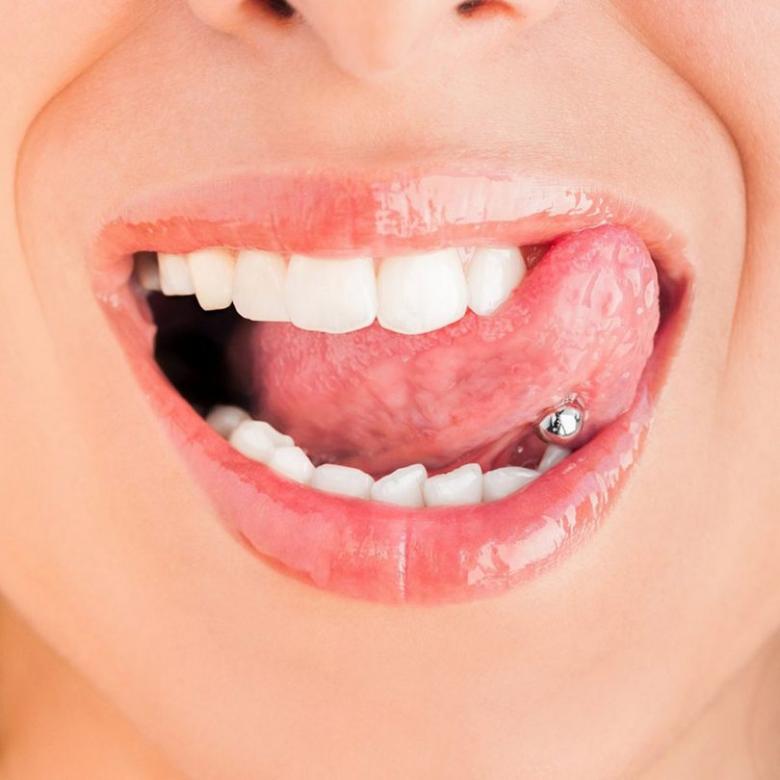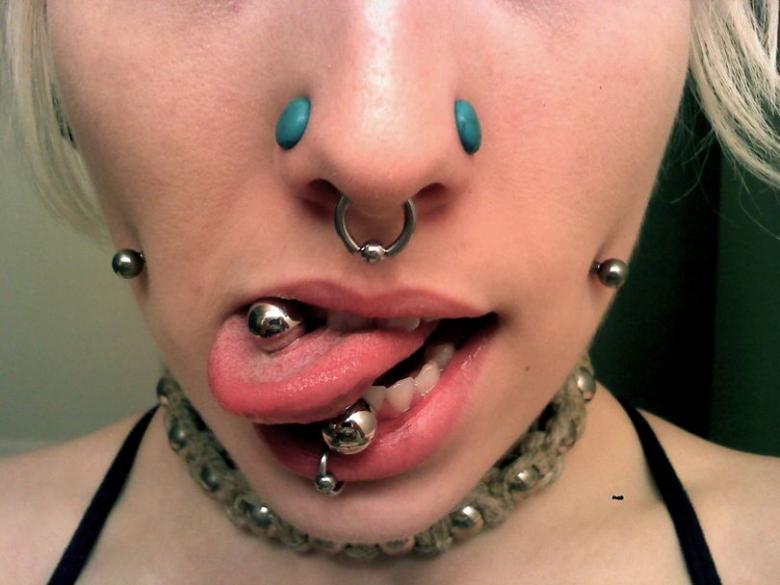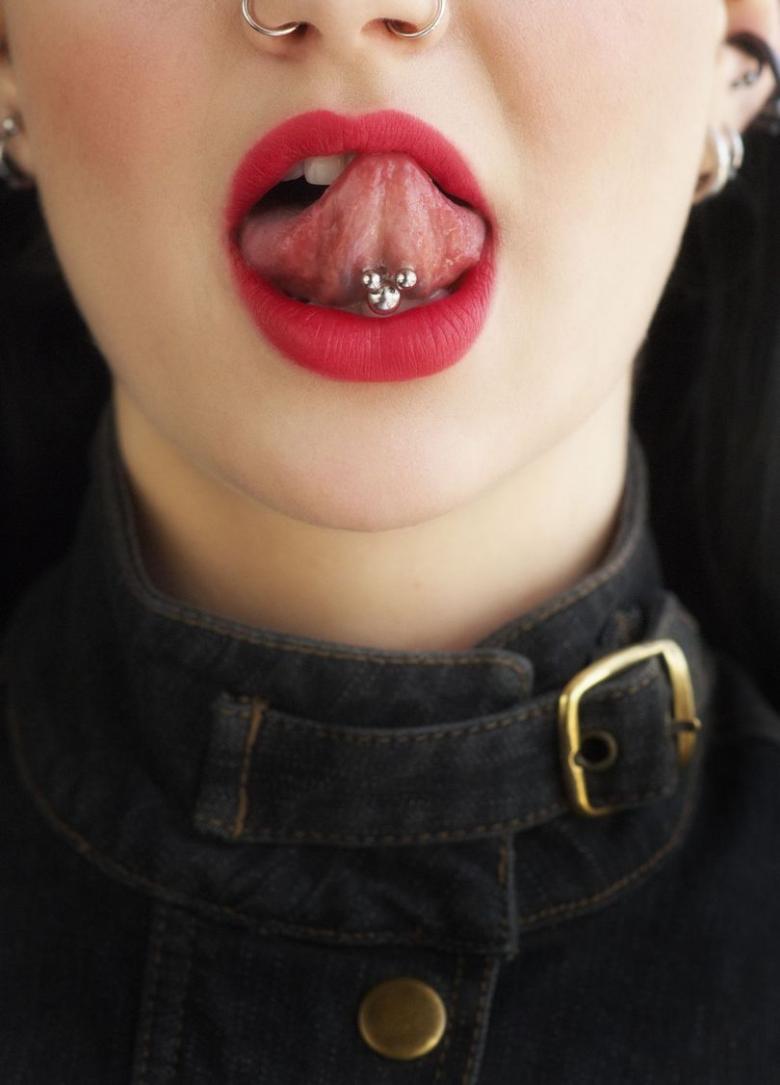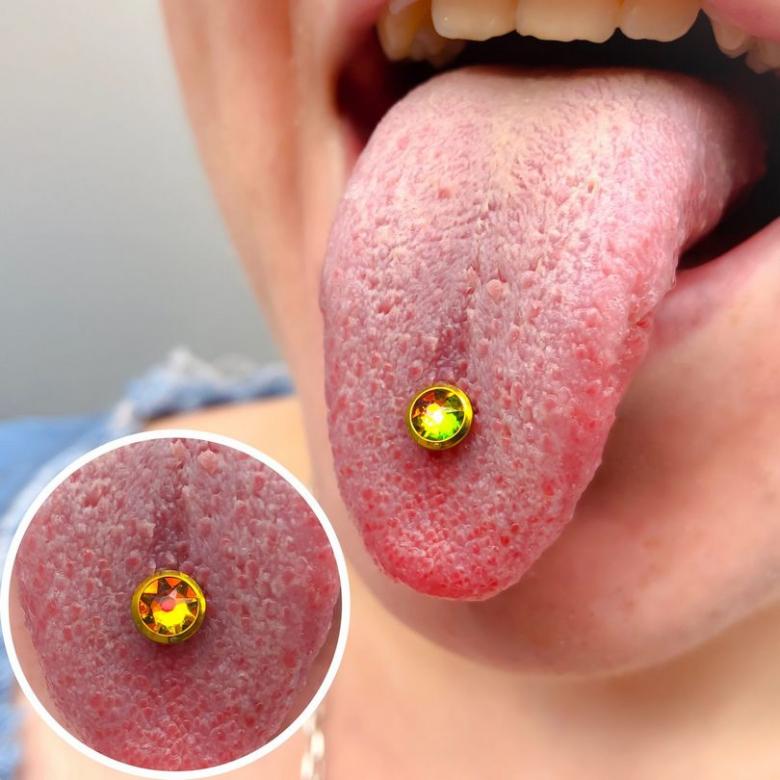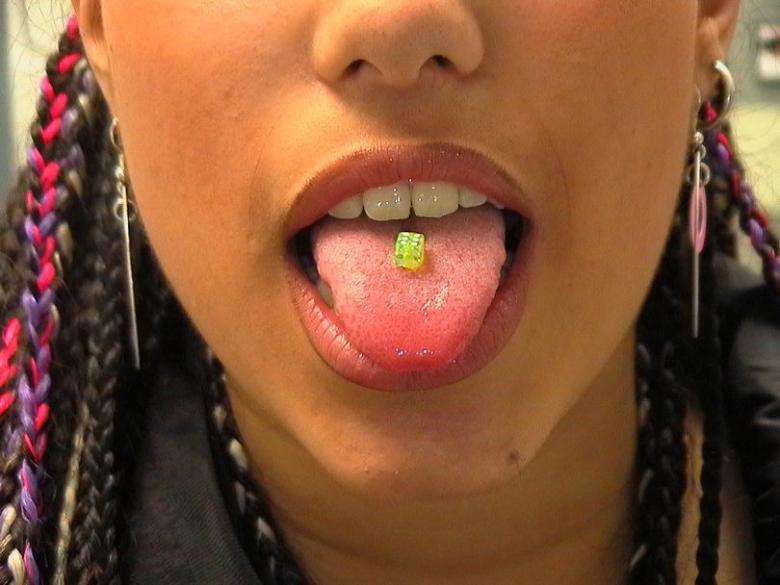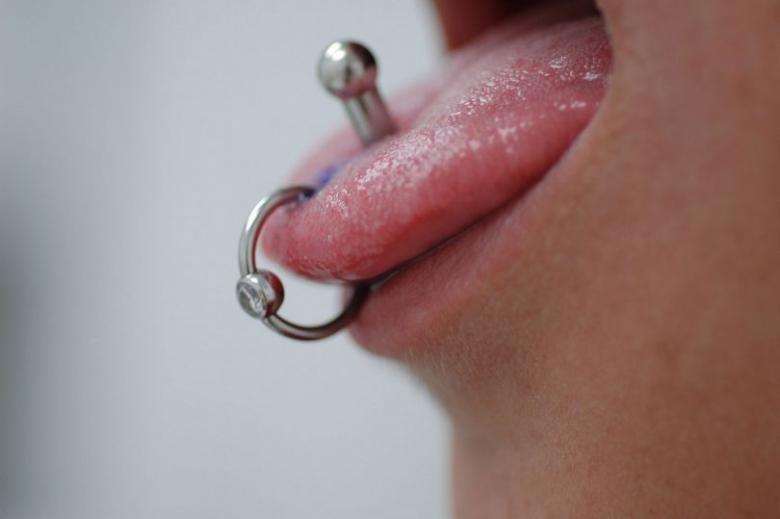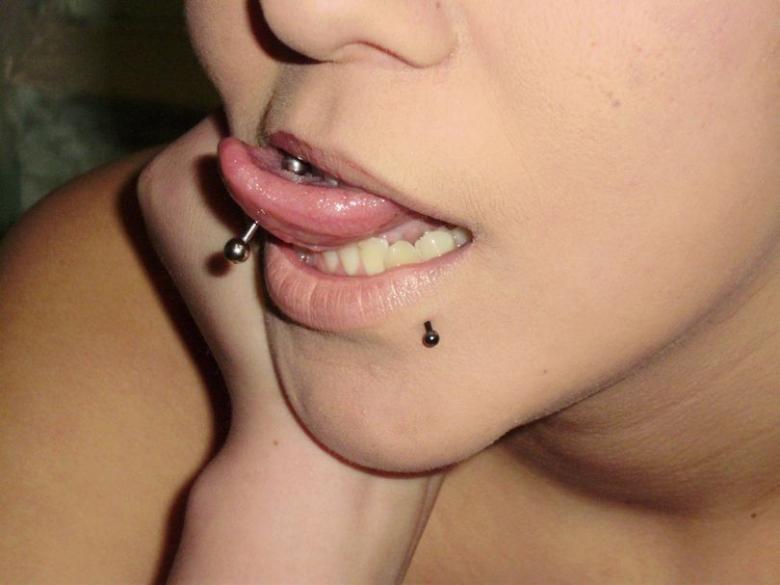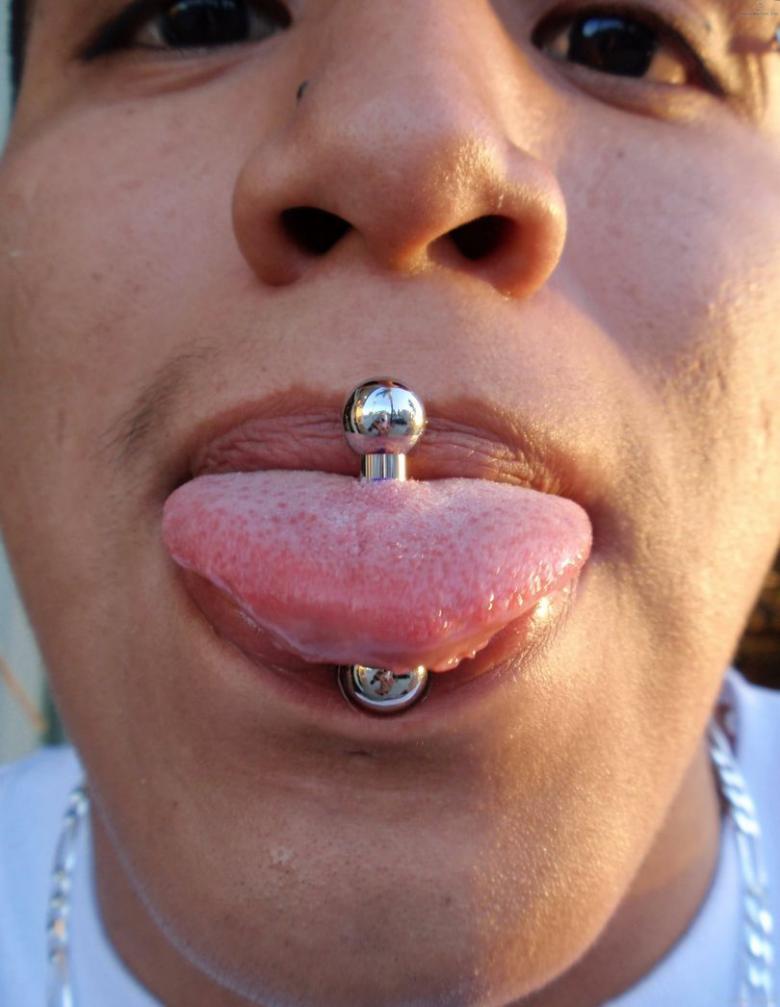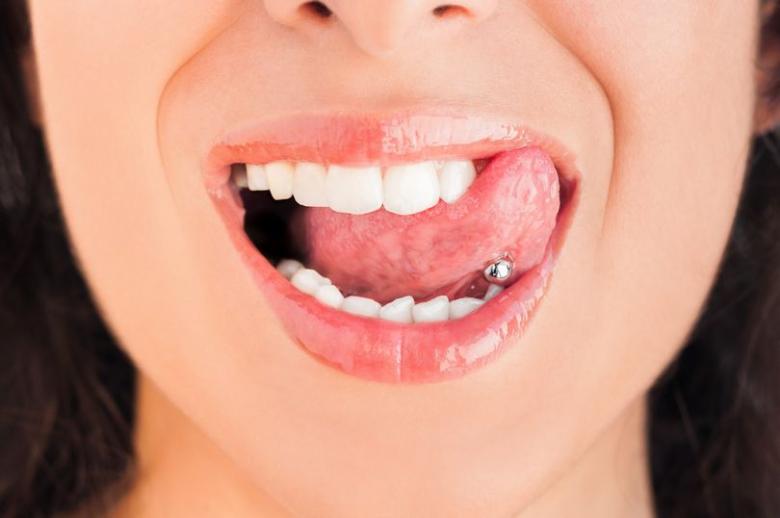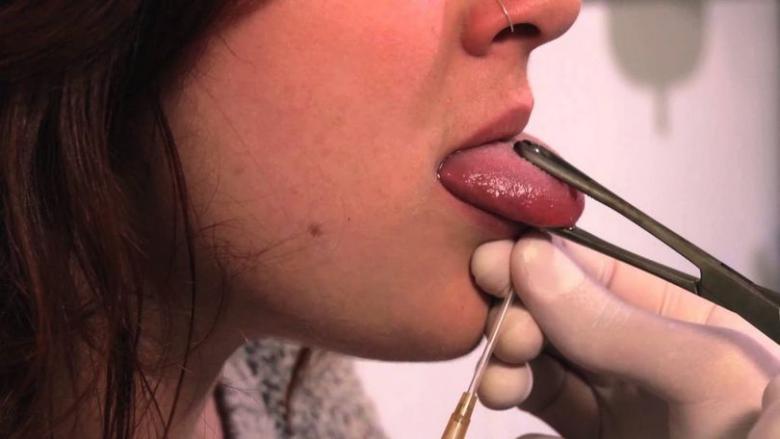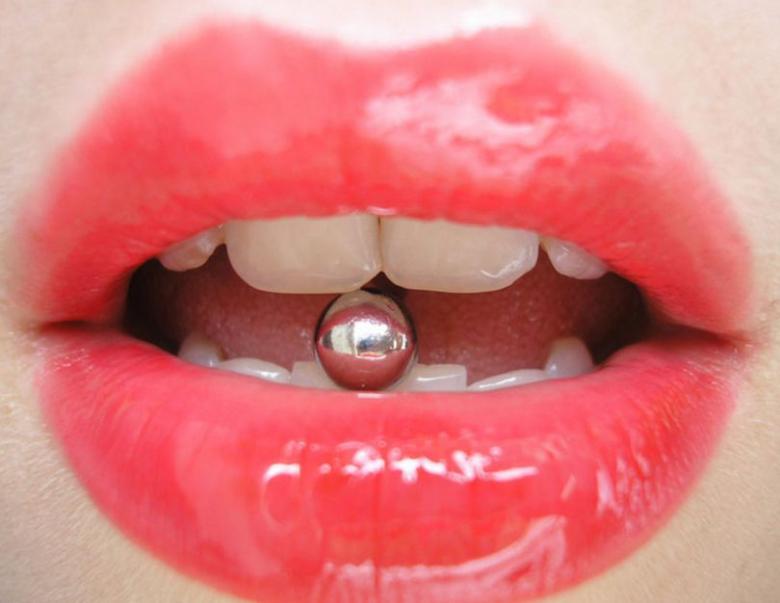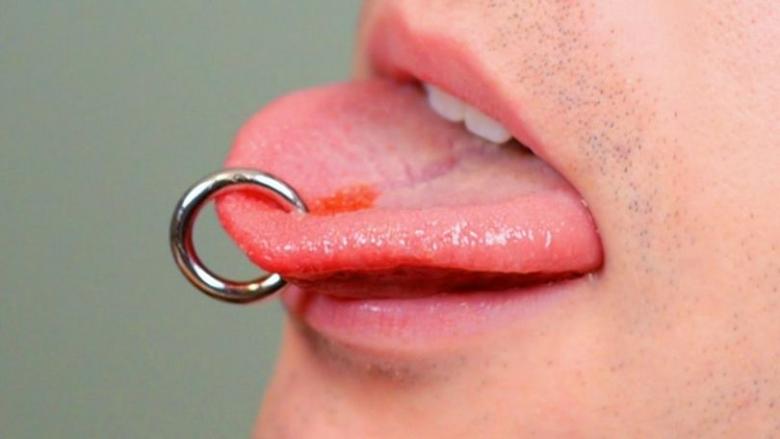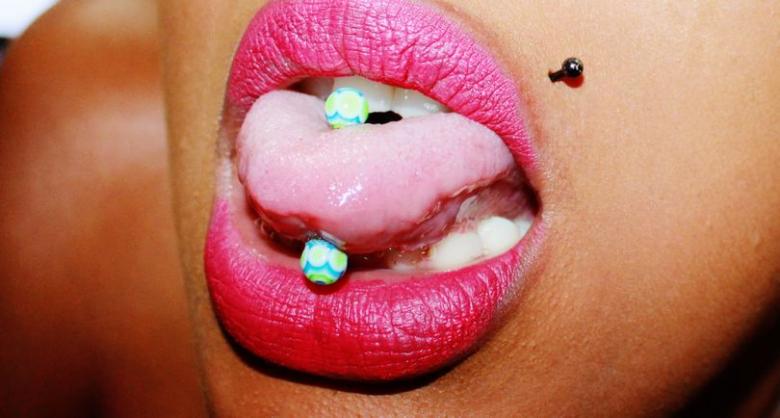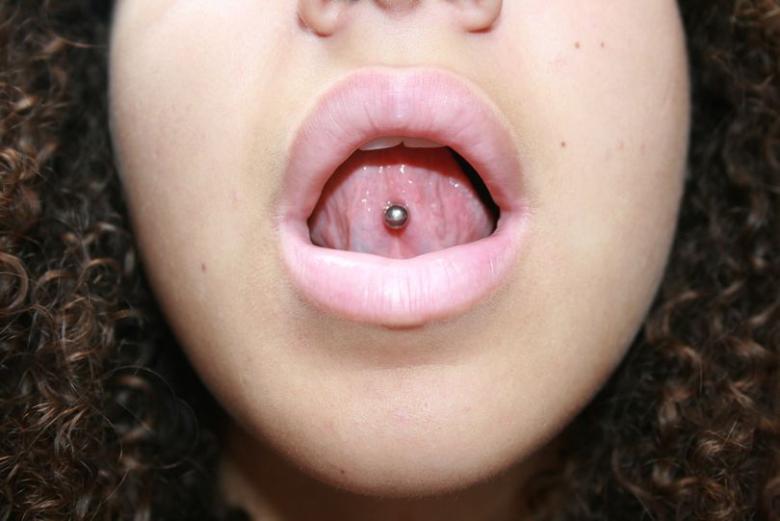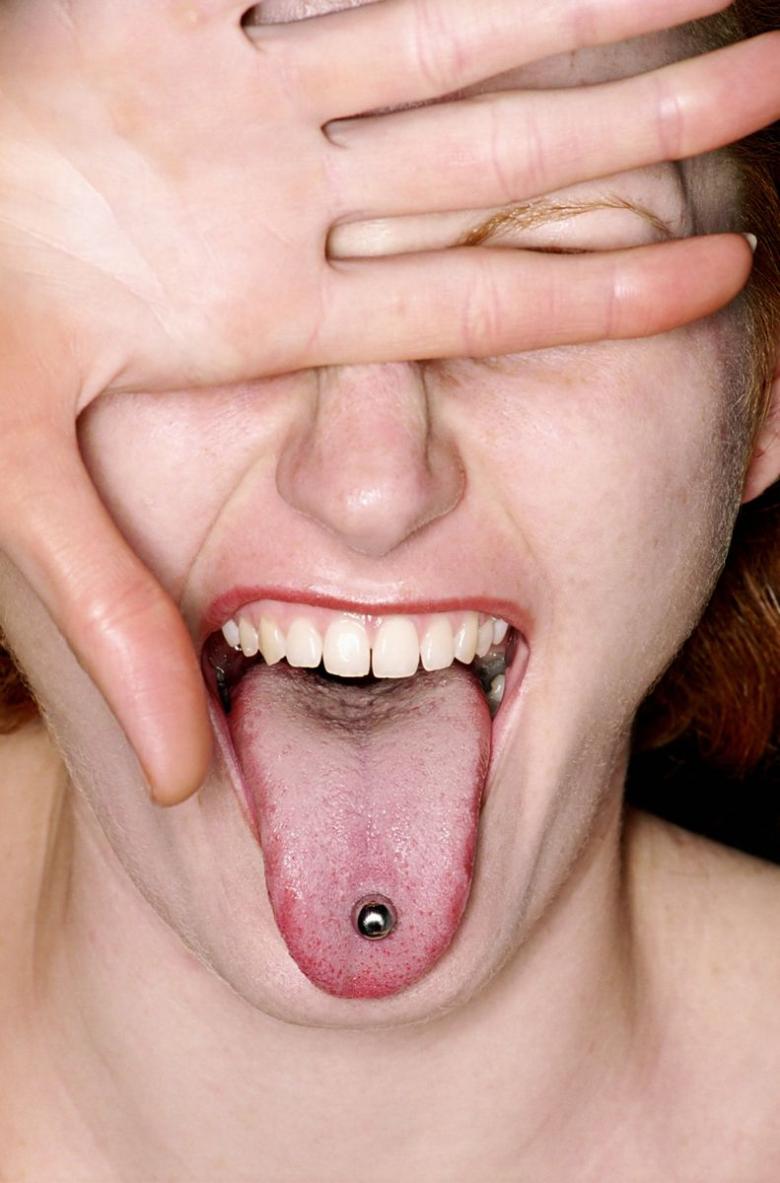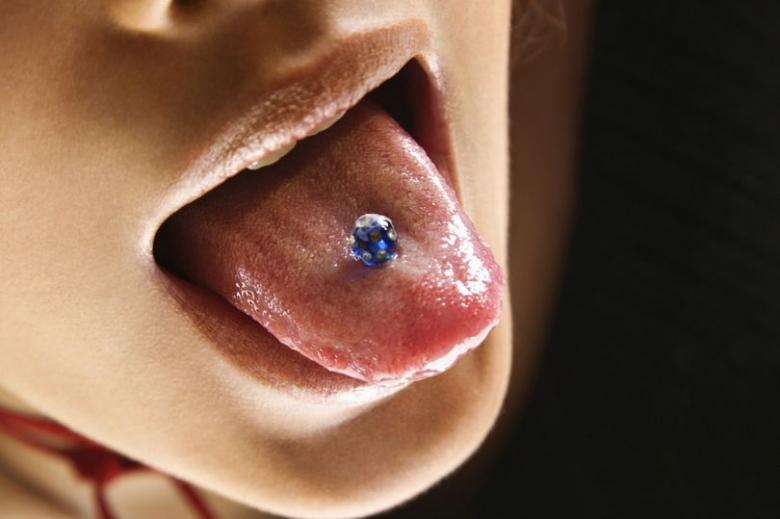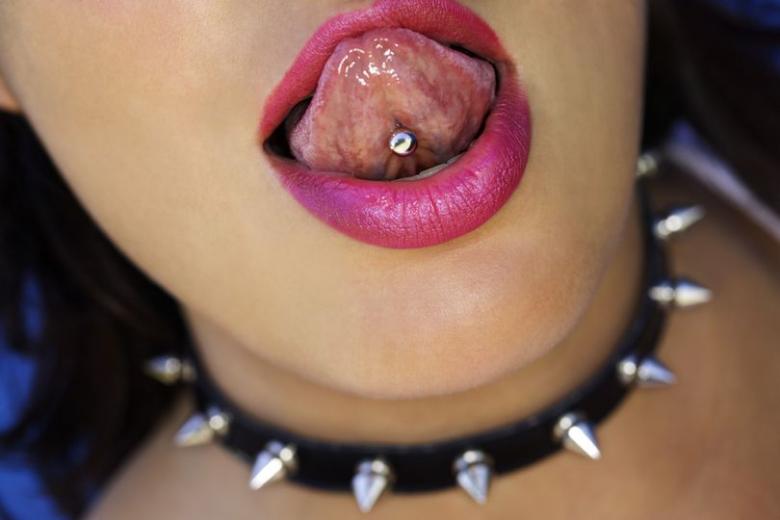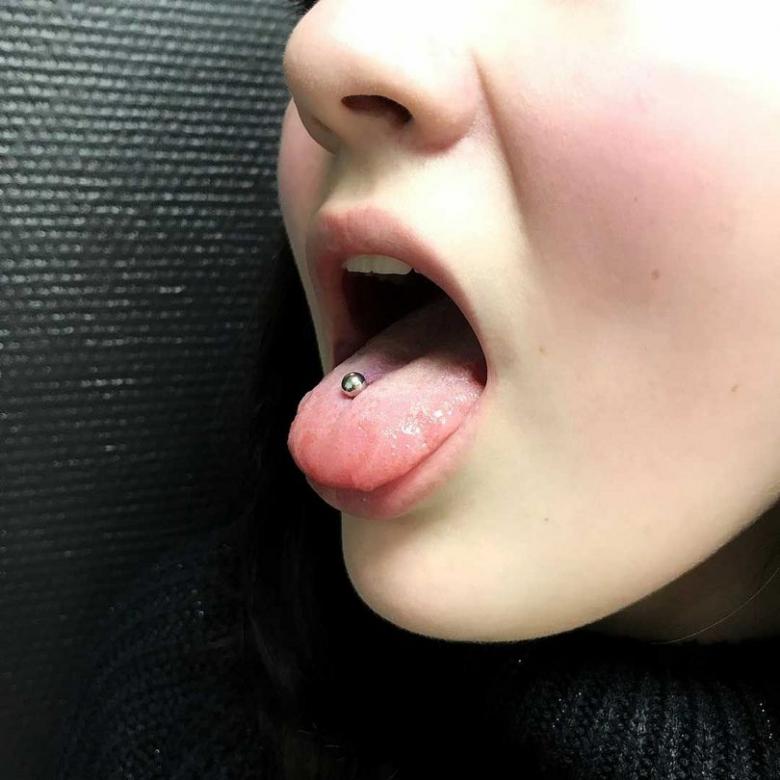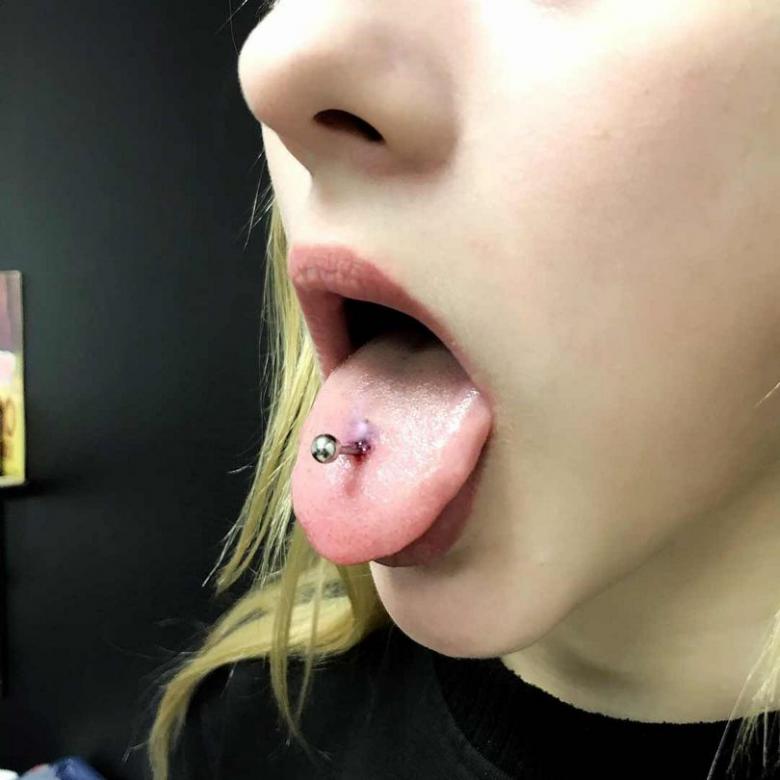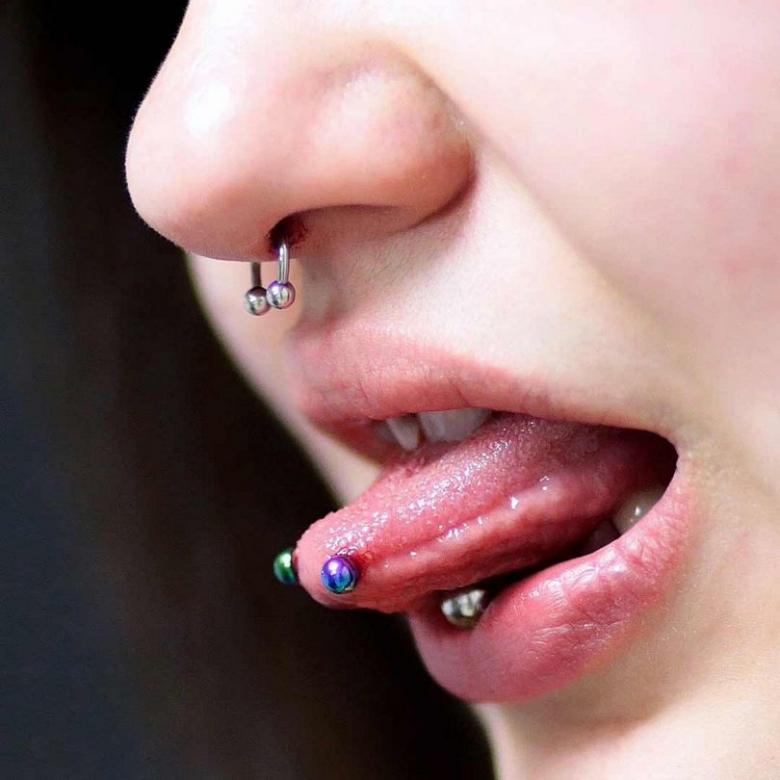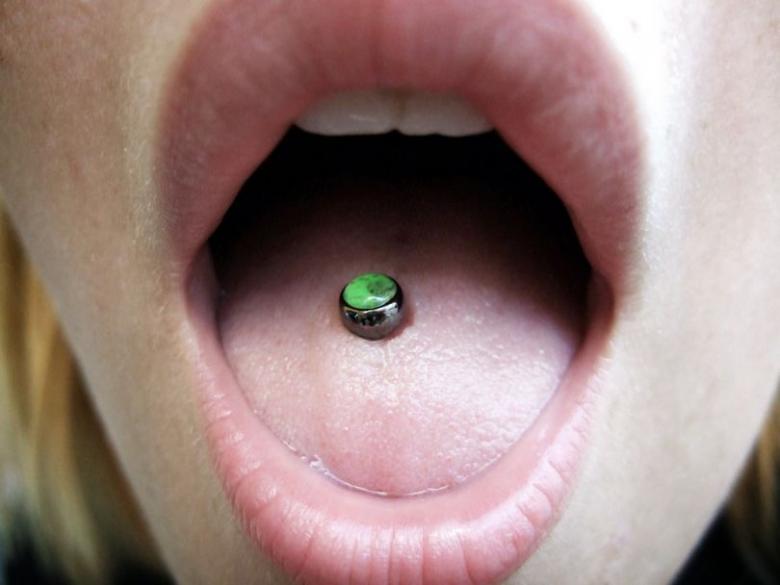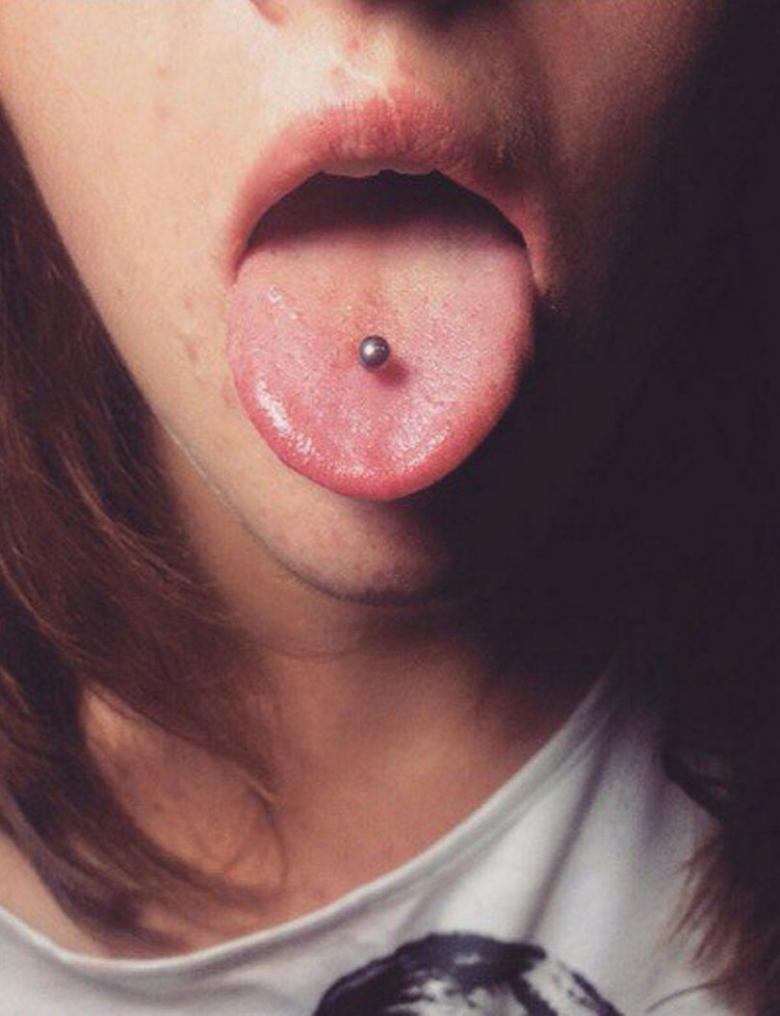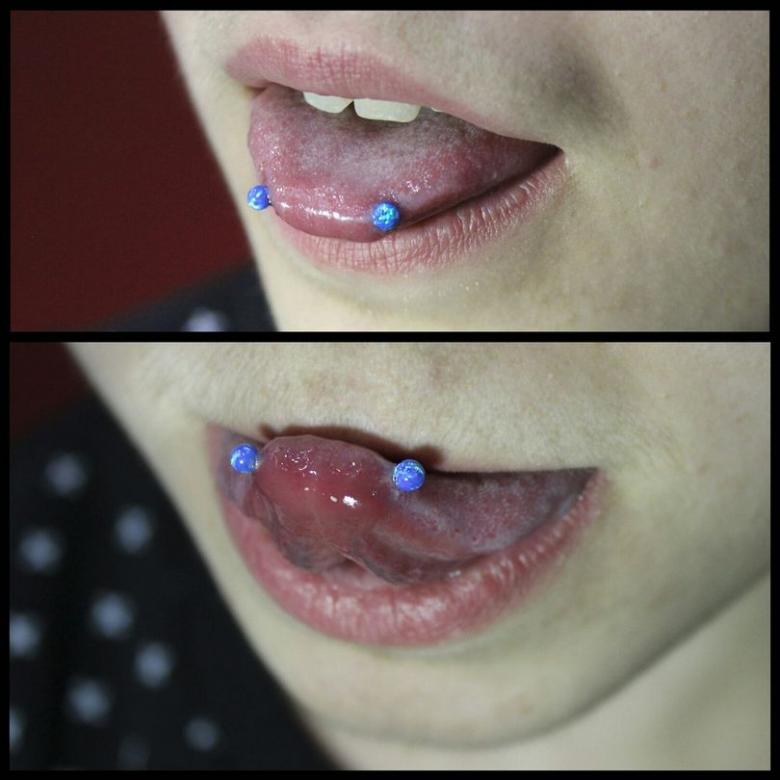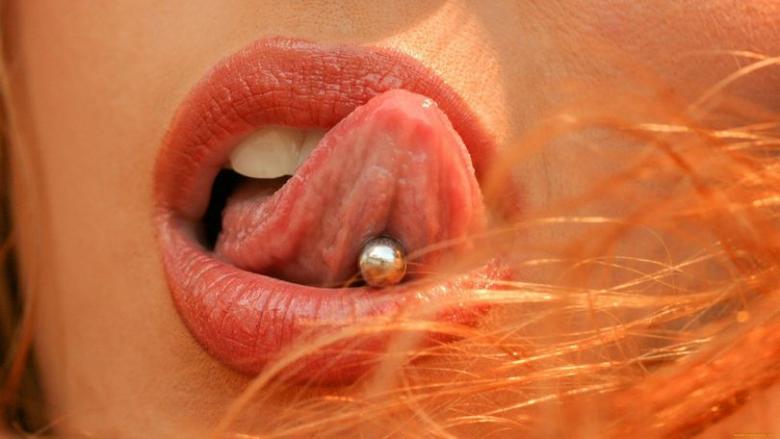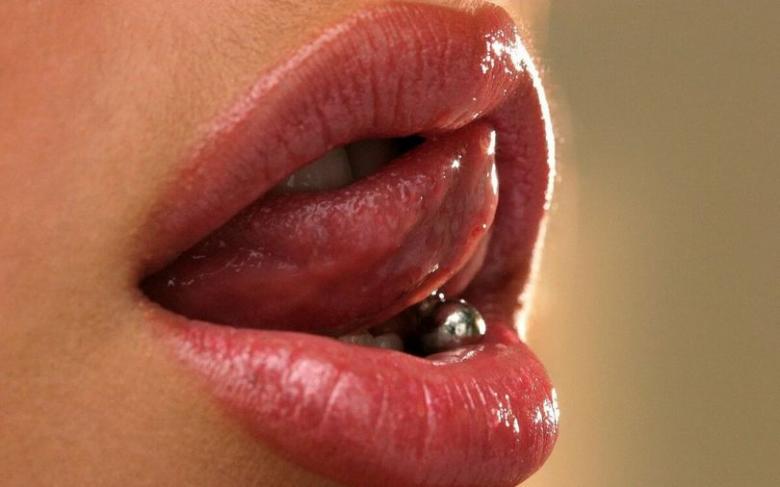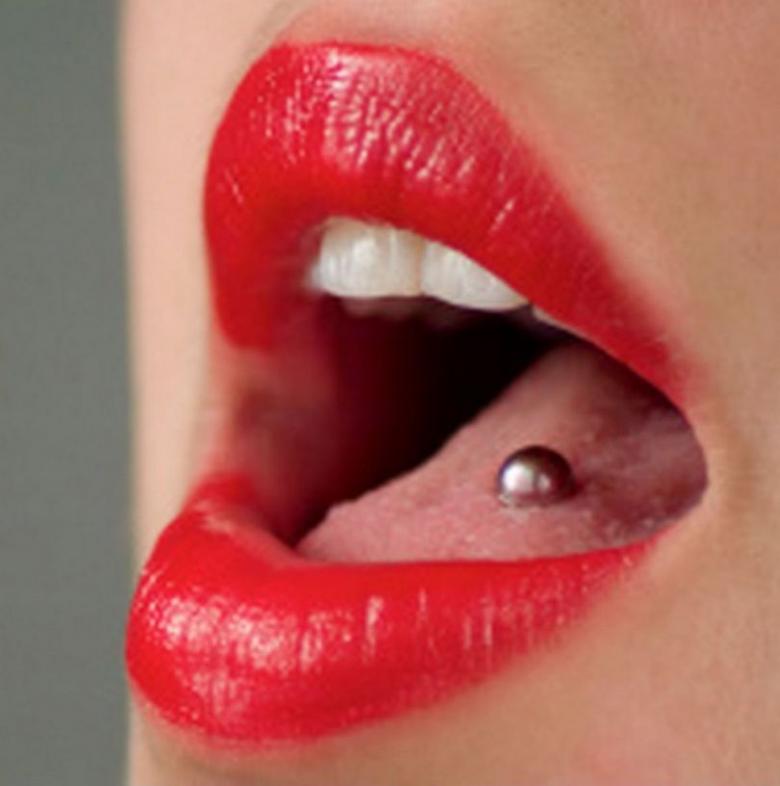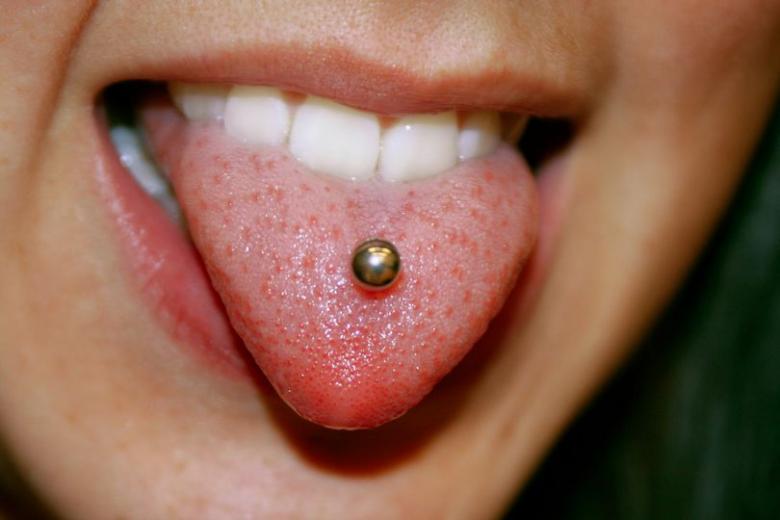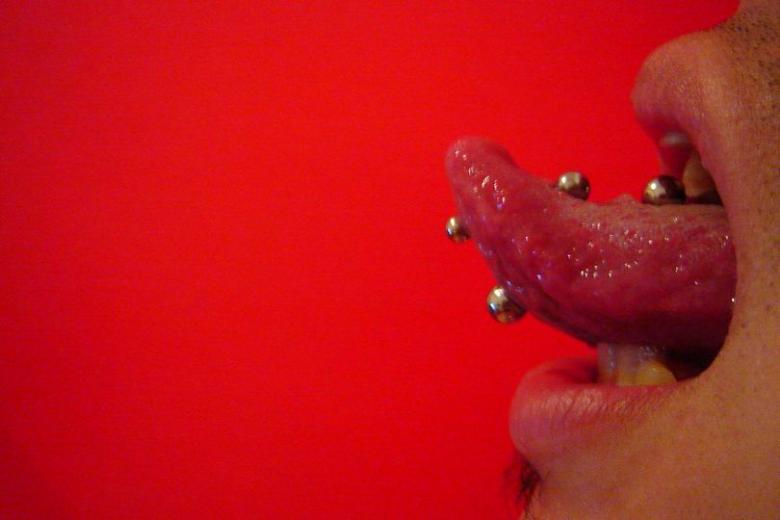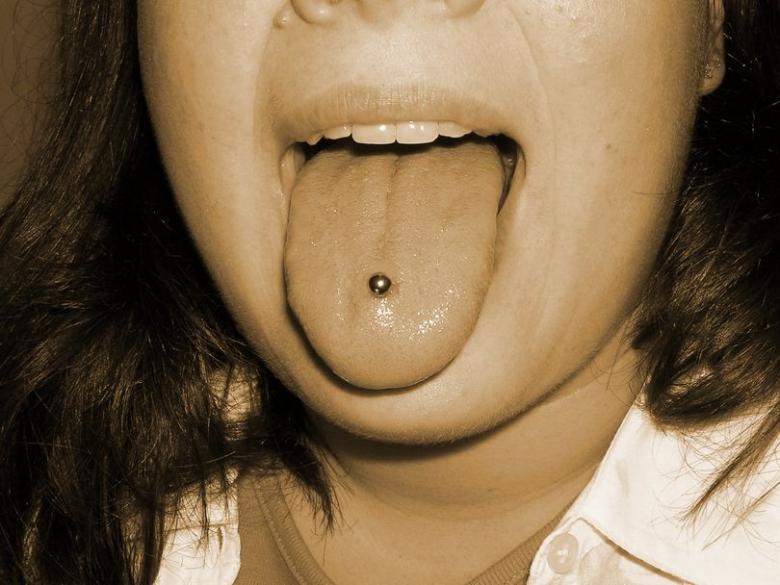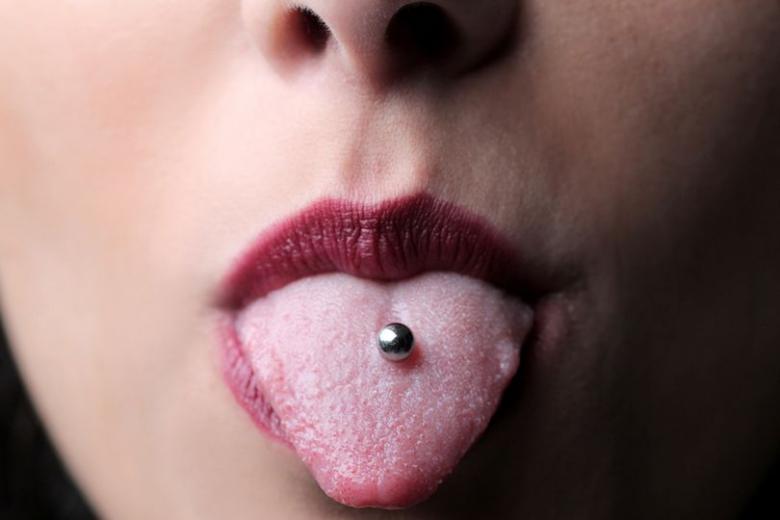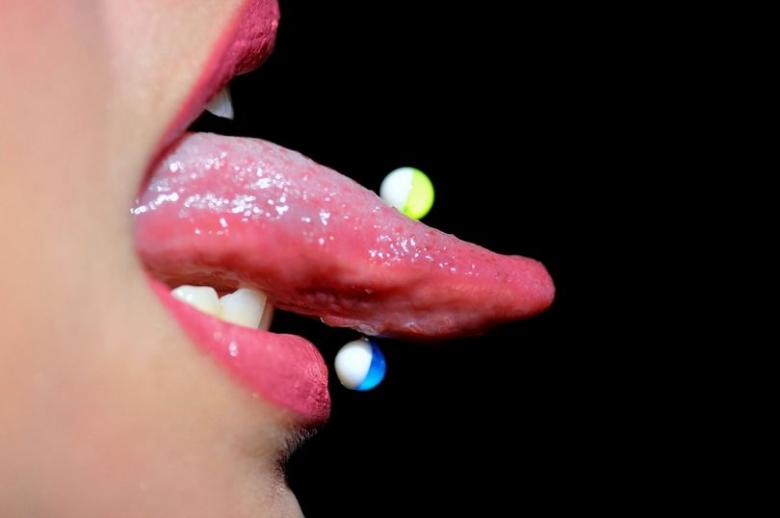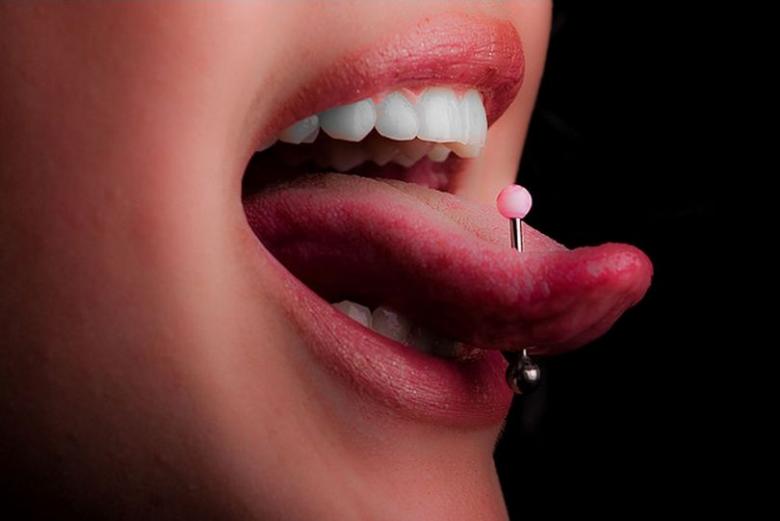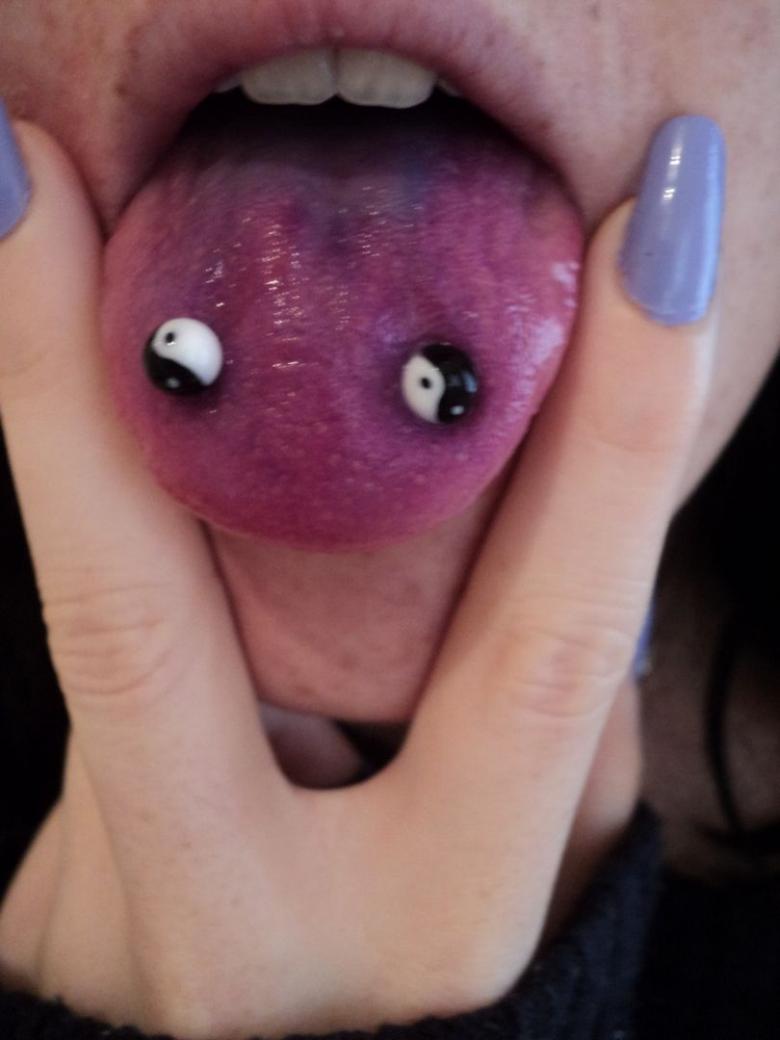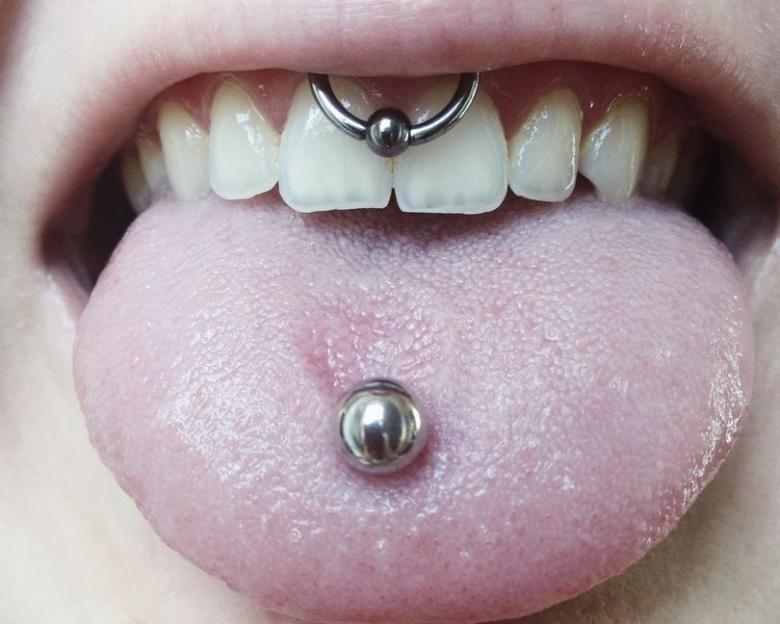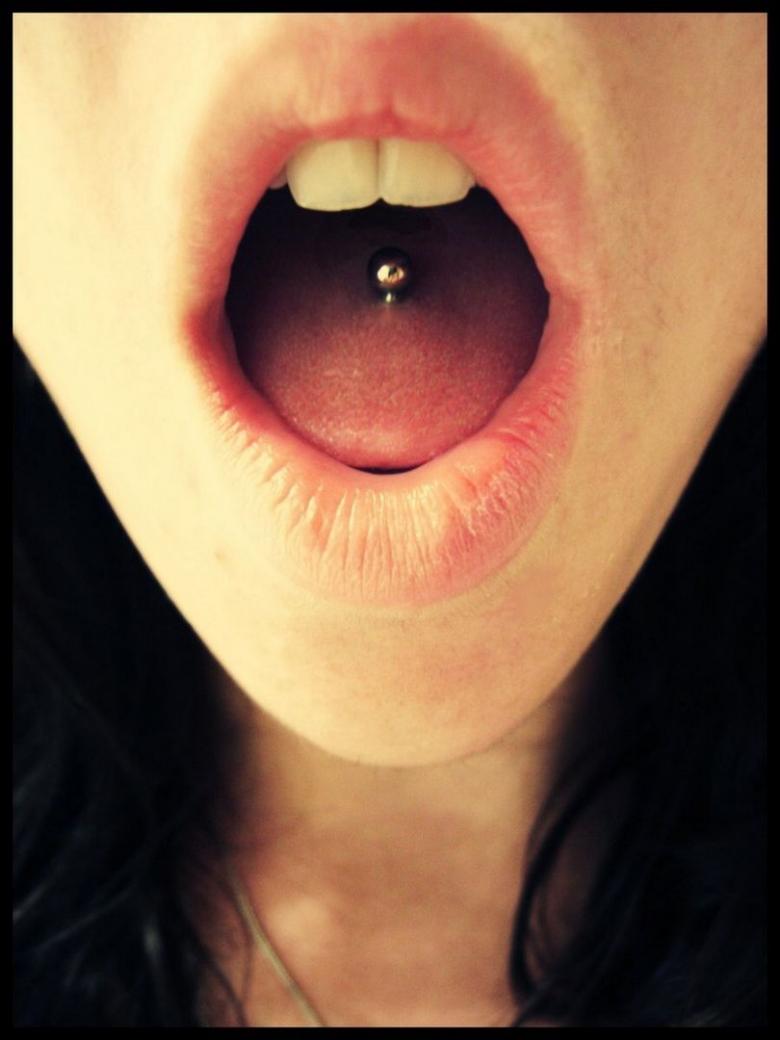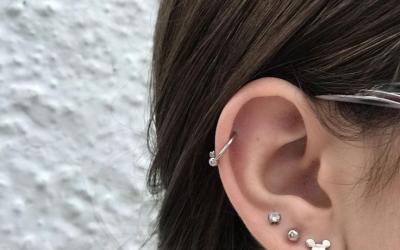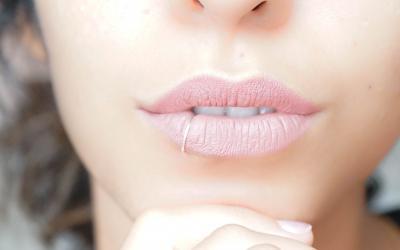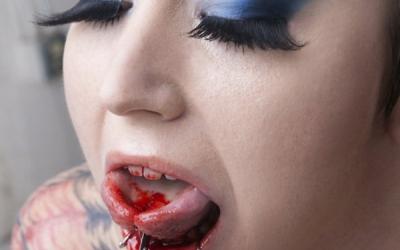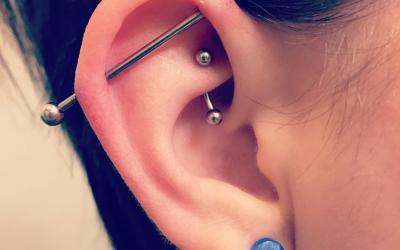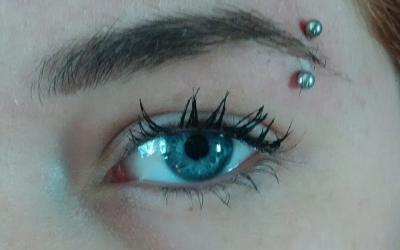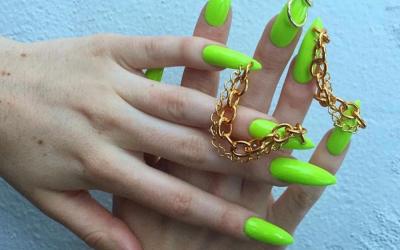Tongue Piercing - history of appearance, whether it hurts to do and how long heals, jewelry earring or rod, creative photos of work
Tongue Piercing - a good opportunity to stand out from the crowd, to emphasize the originality of style. With the right choice of place of piercing, the procedure is safe and easy to bear.


Tongue piercing is one of the most popular procedures in the world of piercing. An earring or a barbell pierced in the tongue looks equally good in male and female versions. Due to the large variety of options for jewelry, you can pick one that will allow you to match the accepted at work or study dress code without problems.
The history of tongue piercing
Tongue piercing has been used since ancient times by the Native Americans - the Maya, the Aztecs. To decorate the tongue they used earrings of various kinds. According to traditional beliefs, this type of piercing protected the wearer from evil spirits.

Various peoples of Africa and Australia used piercings for a similar purpose. The natives of these continents believed that the tongue stud would help expel "evil spirits" that had penetrated a person.

The modern version of tongue piercing began to come into fashion in the early 1990s. It was made popular by famous musical performers. Since then, the tongue piercing fashion has passed through several peaks of popularity and is currently experiencing a new wave of spread.

What to consider before the procedure
The main advantage of installing a tongue piercing is that it allows you to emphasize originality and highlight the bright features of your personality. With the right choice of jewelry, which will be in harmony with the overall style, the aesthetics of the appearance will not be broken. Another advantage is that the piercing is not located in a prominent place, it is not conspicuous.

There are also a number of disadvantages of such language decoration. The most significant include:
- For the first time after the installation of a rod or earring, problems with diction are possible. They are temporary in nature, they disappear within a few weeks after the procedure.
- There can be an increase in salivation. This is the body's reaction to the metal object in the mouth.
- Taste distortions. The metal bar can affect the taste perception of drinks and food.
- Damage to the teeth. If the jewelry is not placed correctly (too close to the edges of the tongue), it can damage tooth enamel and scratch the gums.
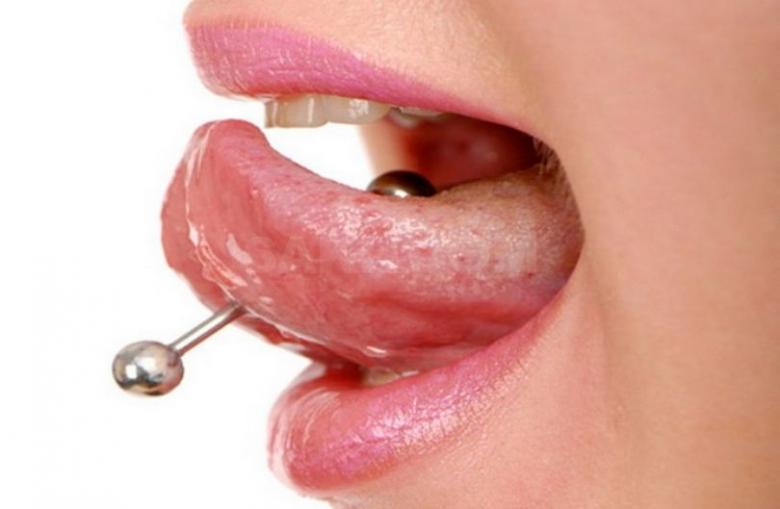
It is important to carefully weigh all the pros and cons before making the final decision on the installation of tongue piercings. Especially seriously need to analyze the opinion of others, as not all people perceive such jewelry positively. This can have a significant impact on career development and social status.
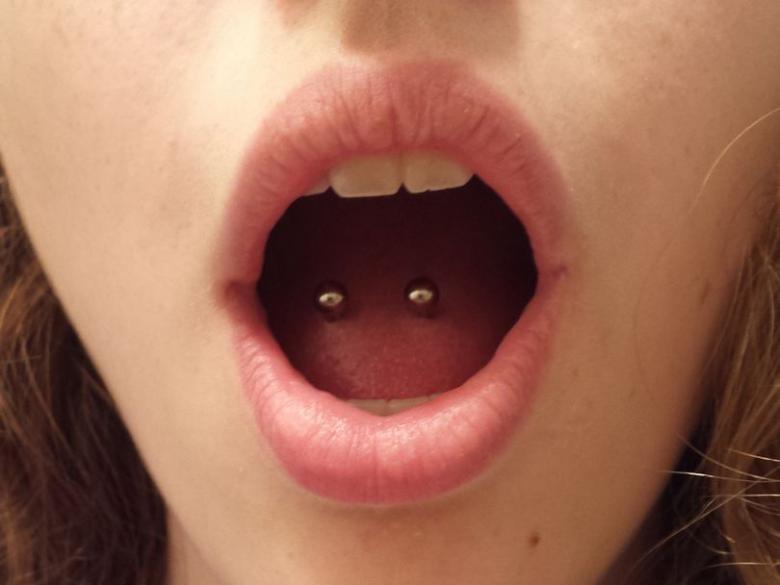
At what age can you do piercings
If you want to undergo the procedure of installation of jewelry, you can be 18 years old. But you can have a piercing before that - from the age of 14. This requires written permission from parents or guardians.

According to medical data, in a hurry with the installation of piercings is not necessary. The growing body of a teenager poorly tolerates the introduction of foreign objects, so it is better to postpone such procedures until adulthood.
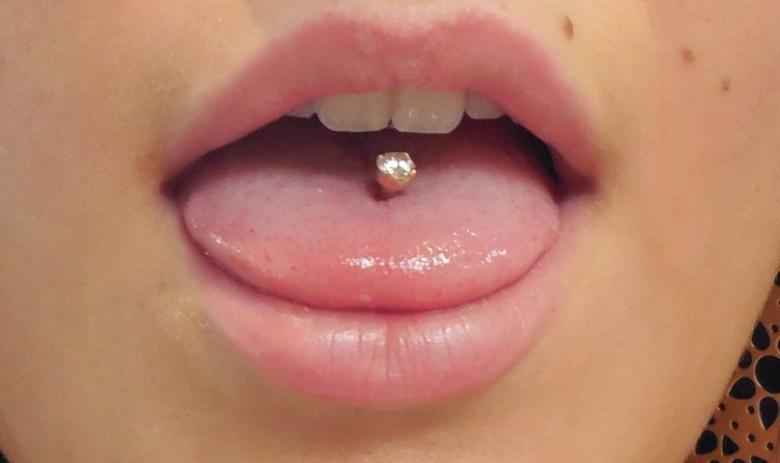
How is the tongue piercing done?
Most often, the procedure takes place under local anesthesia. It consists of the following steps:
- Thorough disinfection of the place of installation of jewelry and tools.
- The future puncture point is anesthetized by applying a surface anesthetic or injecting it into the tongue by injection.
- The tongue is held in place with a special clamp.
- The master makes the puncture and sets the primary rod with a special catheter.
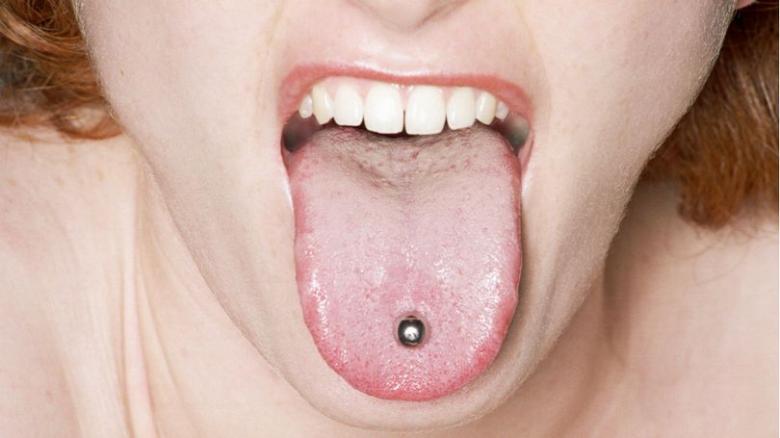
The procedure is completed by rinsing the mouth with an antiseptic solution, usually furacilin is used. It is important to keep in mind that there are a number of medical contraindications to the procedure. These include: hypertension, heart disease, problems with blood clotting, oral infections, epilepsy.

Tongue piercing can be done in several ways. The most popular are the following options:
- Vertical piercing. The decoration is placed in the center of the tongue, a few millimeters from the frenulum.
- Tongue tip piercing. A small ring or earring is placed in a small hole near the tip of the tongue.
- Double piercing. Jewelry is placed in the tongue in parallel or consecutively, depending on the wishes of the customer.
- Multiple. The most complex variety, usually performed in several stages, the decorations can be placed on the entire surface of the tongue.
- Frenulum piercing. The least traumatic kind, but it strongly affects diction and is not suitable for people with a thin frenulum.
- Uvula piercing. The most extreme piercing, in which the ornament is placed in the soft palate uvula.
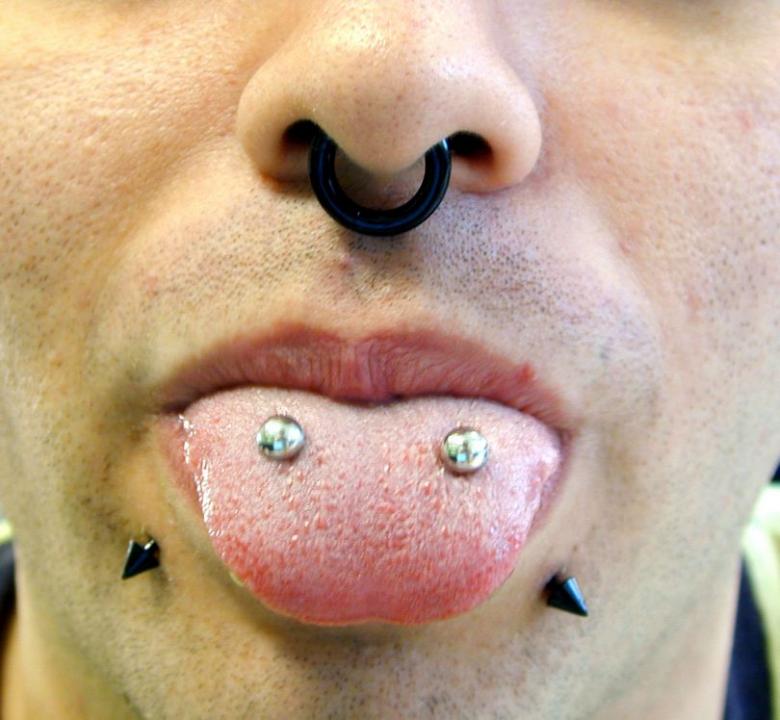
It is important to understand that multiple and extreme varieties of piercings require careful and quite complicated care and are not suitable for everyone.
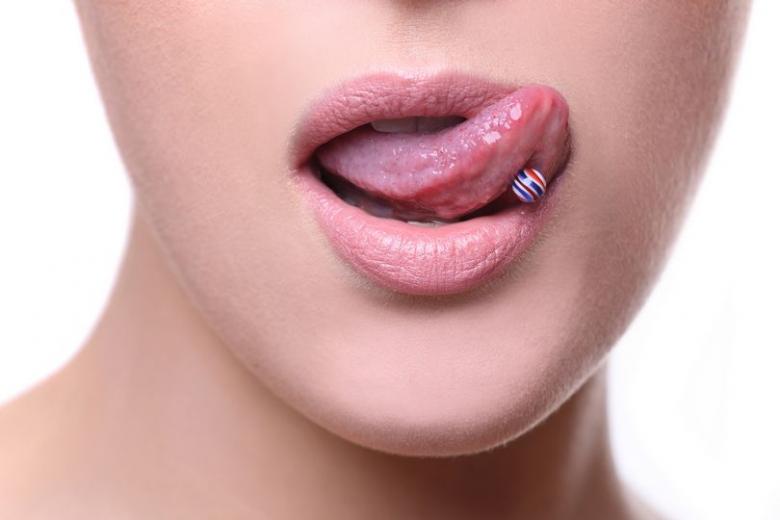
What kind of jewelry can be used
Some of the most popular options for tongue jewelry include:
- Classic rods. This is a straight cylindrical rod with decoration on the tips.
- Curved rods. Resemble the shape of a banana.
- Labrets. These are rods that have a disk on one side and a round retainer on the other.
- Rings and earrings. Usually used for placement in the edges and tip of the tongue.
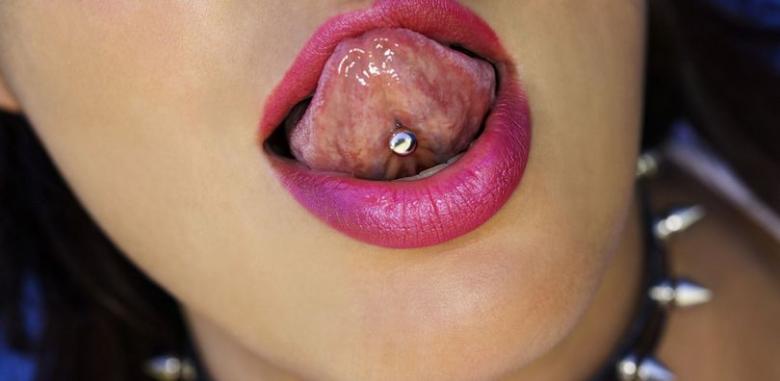
An important criterion is the material of the jewelry. It is better to choose hypoallergenic metals such as gold and silver. Rather universal and inexpensive solutions are jewelry made of nickel-plated steel, brass. Another good alternative is a titanium rod.

It is worth avoiding tongue studs and earrings made of plastic and wood. Despite the very low price, they can contribute to the development of infectious complications and allergic reactions.
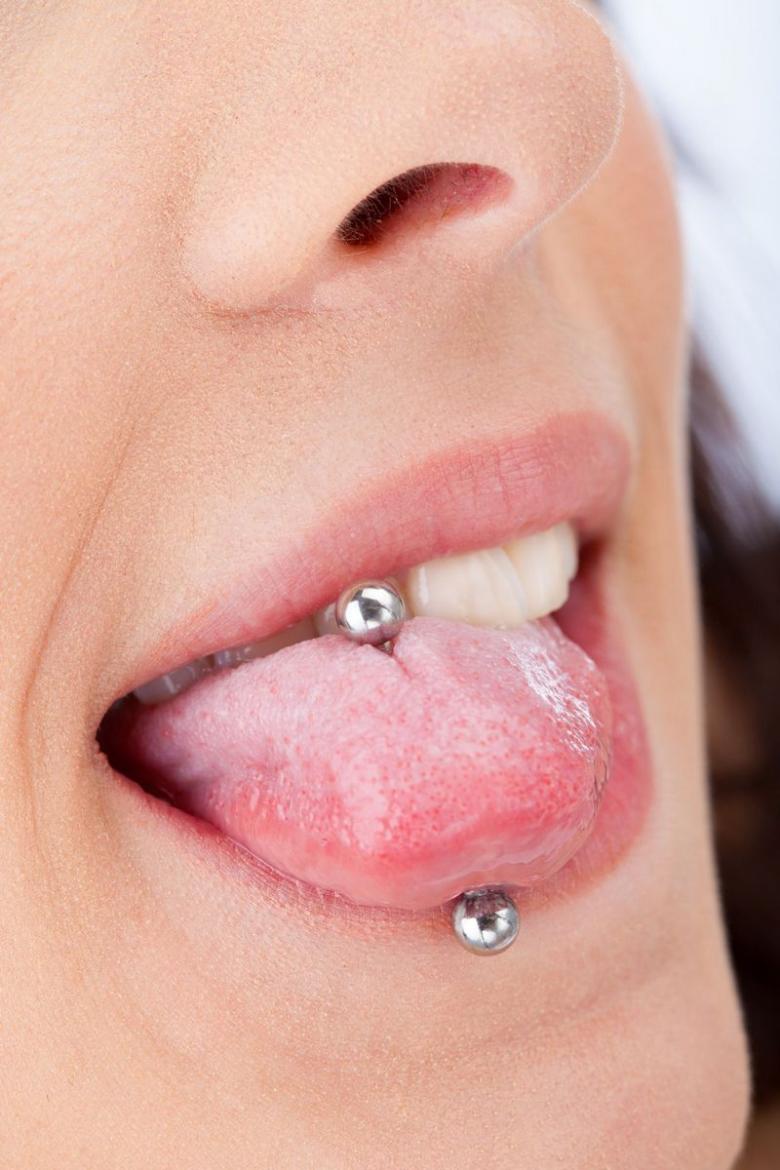
Where can I get my tongue pierced?
Despite the simplicity of the procedure, the installation of piercings should be performed only in a special salon by a qualified master. Only in this way is guaranteed to reduce the risk of complications and side effects.

If the procedure is improperly performed "at home" by an unqualified master, it is almost impossible to ensure sterility. This can lead to infection of the wound with various pathogens, including such dangerous ones as HIV and hepatitis C.

